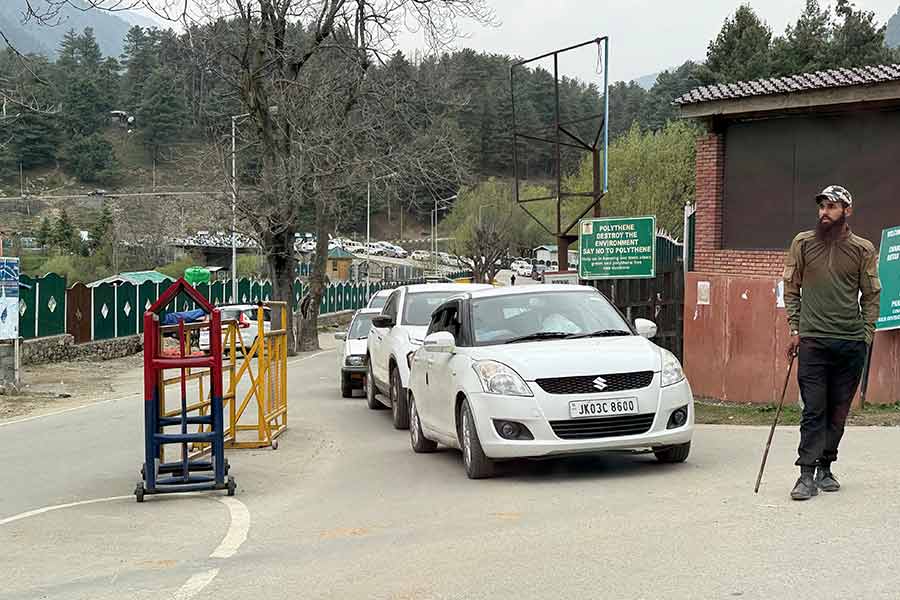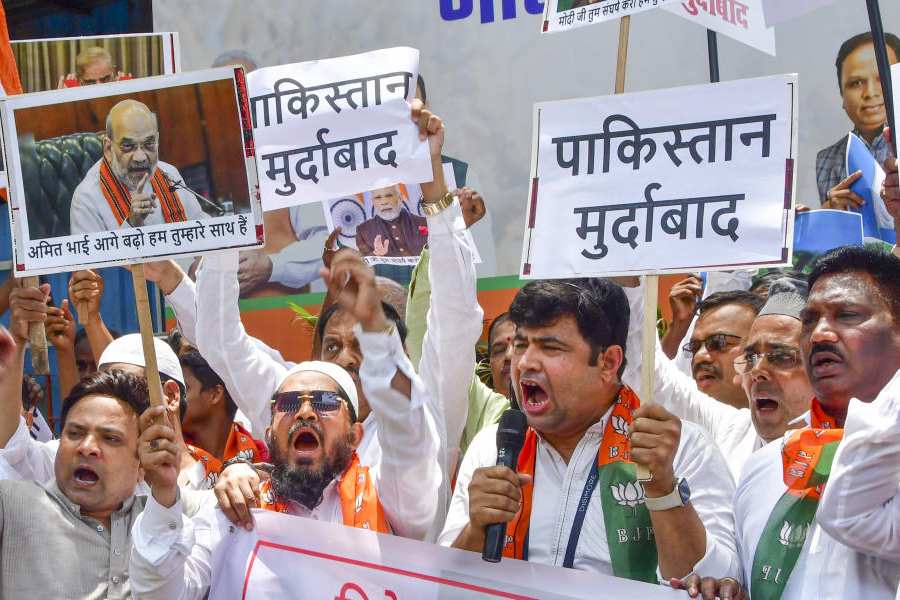 Thursday, 24 April 2025
Thursday, 24 April 2025
 Thursday, 24 April 2025
Thursday, 24 April 2025
The Supreme Court Tuesday rejected a plea challenging the use of Urdu on the signboard of a municipal council building in Patur, Akola district, Maharashtra, while emphasising the prejudice against Urdu stemmed from the misconception that the language is alien to India.
The judgement, delivered by a bench comprising Justice Sudhanshu Dhulia and Justice K. Vinod Chandran, held that the Maharashtra Local Authorities (Official Languages) Act, 2022 does not prohibit the use of an additional language on signboards as it upheld the Bombay high court’s order allowing the use of Urdu, in addition to Marathi.
“Language must not become a cause for division amongst people. Our misconceptions, perhaps even our prejudices against a language have to be courageously and truthfully tested against the reality, which is this great diversity of our nation: Our strength can never be our weakness. Let us make friends with Urdu and every language,” LiveLaw quoted the Supreme Court.
The plea had been filed by a former member of the Patur municipal council, who contended that using Urdu was not permissible.
Her complaint was initially rejected by the council, which held that displaying Urdu along with Marathi was justified.
She then filed an application under the Maharashtra Municipal Council, Nagar Panchayats and Industrial Township Act, 1965, which ruled in her favour stating that 100 per cent Rajbhasha Marathi must be used in government proceedings.
This was later set aside by the Divisional Commissioner, Amravati, and then by the Bombay high court. The matter reached the Supreme Court as a Special Leave Petition (SLP).
Referring to the use of Urdu on the signboard, the court said: “It must be stated that a Municipal Council is there to provide services to the local community of the area and cater to their immediate day-to-day needs. If people or a group of people, residing within the area covered by the Municipal Council are familiar with Urdu, then there should not be any objection if Urdu is used in addition to the official language i.e. Marathi, at least on the signboard of the Municipal Council. Language is a medium for exchange of ideas that brings people holding diverse views and beliefs closer and it should not become a cause of their division.”
The court also addressed the perception that Urdu is foreign to India: “The prejudice against Urdu stems from the misconception that Urdu is alien to India. This opinion, we are afraid, is incorrect as Urdu, like Marathi and Hindi, is an Indo-Aryan language. It is a language which was born in this land. Urdu developed and flourished in India due to the need for people belonging to different cultural milieus who wanted to exchange ideas and communicate amongst themselves. Over the centuries, it attained ever greater refinement and became the language of choice for many acclaimed poets.”
The judgement noted that Urdu continues to shape daily speech across India.
“Even today, the language used by the common people of the country is replete with words of the Urdu language, even if one is not aware of it,” it said. “It would not be incorrect to say that one cannot have a day-to-day conversation in Hindi without using words of Urdu or words derived from Urdu. The word 'Hindi' itself comes from the Persian word 'Hindavi'! This exchange of vocabulary flows both ways because Urdu also has many words borrowed from other Indian languages, including Sanskrit,” the court observed.
The court also remarked on the use of Urdu in legal parlance: “Urdu words have a heavy influence on Court parlance, both in criminal and civil law. From Adalat to halafnama to peshi, the influence of Urdu is writ large in the language of the Indian courts. For that matter, even though the official language of the Supreme Court and the high courts as per Article 348 of the Constitution is English, yet many Urdu words continue to be used in this Court till date. These include vakalatnama, dasti, etc.”
Clarifying the distinction between language and religion, the judgement said: “Language is not religion. Language does not even represent religion. Language belongs to a community, to a region, to people; and not to a religion. Language is culture. Language is the yardstick to measure the civilizational march of a community and its people. So is the case of Urdu, which is the finest specimen of ganga-jamuni tehzeeb, or the Hindustani tahzeeb, which is the composite cultural ethos of the plains of northern and central India. But before language became a tool for learning, its earliest and primary purpose will always remain communication.”
Sanjay Hegde, senior advocate at the Supreme Court, said, “Read the judgement. Beautiful writing.”
B.R. Naidu, former chief of social media of the Karnataka Pradesh Congress Committee, posted on X: “Language is not religion. It belongs to people, not politics. A big slap to hate-mongers who divide India in the name of language and religion.”
Filmmaker Onir wrote, “Thank God for small mercies. With so many morons around they will destroy our rich diverse cultural heritage.”
Lyricist Javed Akhtar added context on the historical bias against Urdu.
“In 1798 an Islamic scholar Shah ubdulqadir translated Quran for the first time in urdu. Almost all the mufti’s and Qazi’s of that time gave fatwas against him for daring to translate the holy book in such s heathen language like urdu. After many years Jinnah who could not speak urdu to even save his life declared that urdu is the language of Muslims what actually surprises me that there still many people who believe Jinnah, ” Akhtar posted on X.







